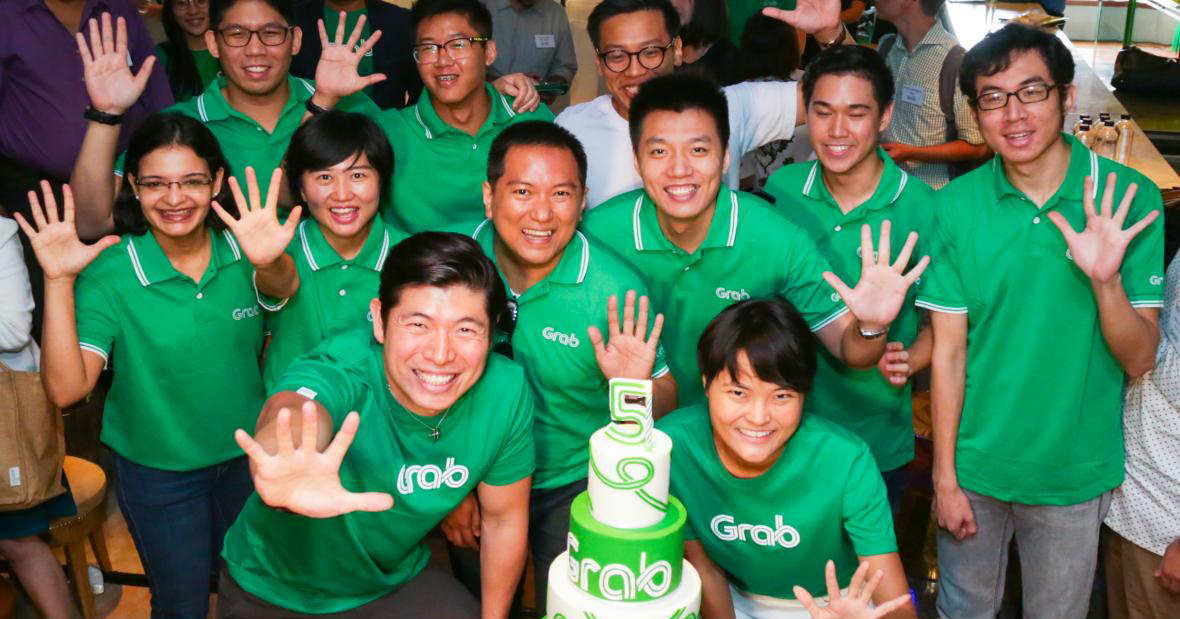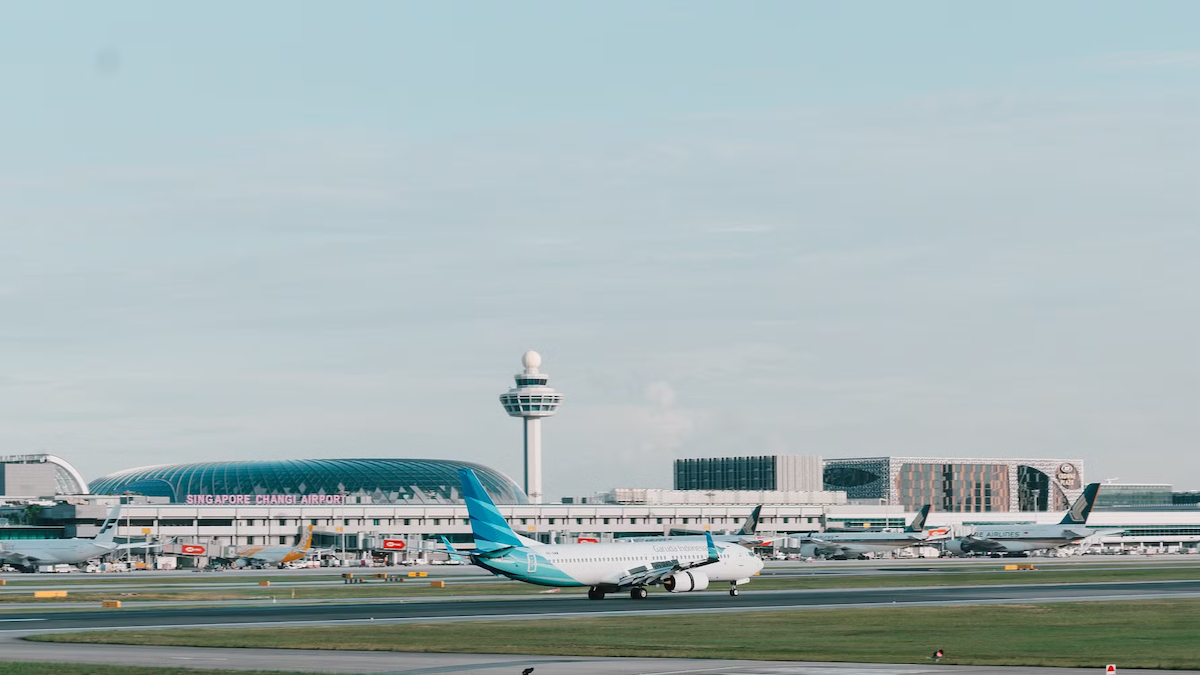Just last week, Grab announced it is expected to raise S$2.73 billion in a new round of financing from Didi Chuxing and Softbank Group Corp. They are also expecting another S$681 million from its new and current investors.
According to Grab,”this is the largest single financing in the history of Southeast Asia.”
Meanwhile, founder and CEO of Didi Chuxing, Cheng Wei also said “Grab is establishing a clear leadership in Southeast Asia’s internet economy based on its market position, superior technology, and truly local insight.”
With Didi Chuxing’s buyout of Uber China in August 2016, Uber cites expansion elsewhere, costly competition and its focus on introducing new features and products such as UberEats as reasons for the buyout.
Does this spell trouble for Uber’s efforts to dominate Asia? And what would the Grab funding mean for their future developments?
1. Investing In GrabPay’s Growth

CEO and co-founder of Grab, Anthony Tan said the company would “build on this to make GrabPay the payment solution of choice for Southeast Asia” with this financial aid.
Masayoshi Son, Chairman and CEO of SoftBank Group Corp., supported his sentiments, “Grab is using technology to address transportation and payments, some of the biggest challenges present in Southeast Asia“.
According to the press release, GrabPay – their cashless top-up payments option – “has grown more than 80% month-on- month since its launch in December 2016, a testament to consumer trust in Grab’s platform.”
With this much confidence in changing the way consumers pay, will we see a new GrabPay update coming soon? Or another form of cashless payment?
Uber, on the other hand, gives passengers the option to pay with their debit/credit cards and also introduced Apple Pay and Android Pay as other cashless payment options.
2. Driver Acquisition
Truth be told, I participated in one of Uber’s driver-poaching programmes recently – similar to this one.
I recall the trainers saying, “it’s essentially a sales role, but think of it as a very good part-time job you can do while on your way home.”
Just convince at least one Grab driver in one week to drive for Uber, and you’ll get an attractive amount of cash incentive. If the driver I converted refers another driver from Grab into this programme, the converted driver stands to gain an incentive as well.
On top of that, ambassadors get to claim up to $10 for each Grab ride taken.
In a report of Uber and Grab using ‘ambassadors’ to increase their driver pools, a driver said that he had been approached before, but still continued to drive for Grab because “he felt that he could earn more“.
Despite their differences, both Grab and Uber deny this practice as poaching because ambassadors and drivers are considered freelancers, not employees. So, it’s fair play to them.
Incentive models differ for each company but both promise ambassadors the same thing – attractive payouts with little commitment.
With a fresh batch of greens in the bank, Grab could possibly step up its ambassador programme to hit back at Uber with more attractive incentives for its ambassadors and new drivers.
3. User And Driver Retention
There are loyal Grab users, and there are those who swear by everything Uber.
There are also users who just go for the one with lower fares.
Both companies reportedly take 20 per cent commission from drivers’ earnings, although earning models differ.
When I strike up conversations with Grab or Uber drivers, I would ask them about their experiences driving for either company.
Most Grab drivers I spoke to said they had switched from Uber because there was more transparency in their operations and swifter pay-outs, while Uber drivers say they get more passengers.
Grab’s driver app allows them to see destinations before deciding to pick passengers up which allows them to plan routes. Uber’s driver app only reveals passenger destination after accepting the ride, which most of the drivers say is a major disadvantage.
There were Uber drivers, however, who stood firmly by their company, one even saying that it was a “saviour” for the times when he was in-between jobs.
According to my colleague, she even met a driver who actually plays for both sides – picking between the apps whenever he deems fit.

As for user retention, Grab introduced GrabRewards for commuters to accumulate points with every trip, partnering up with merchants such as Deliveroo, Zalora, KFC Delivery.
Here’s where Uber falls behind. On top of not having a loyalty programme, Uber isn’t harnessing the full potential of UberEATS, despite them having a first mover advantage.
In addition, Grab’s rider promotions have been generous to say the least. One promotion allows riders to buy $30 worth of prepaid credits and get a discount of $5 to $8 per ride for up to four rides a day during a one-week period, according to one rider.
Grab believes this tactic encourages more brand loyalty than, say, offering a promo code.
But I have to say, Uber introducing the Beethoven programme for its deaf or hearing-impaired drivers shows that it is an inclusive company, which could appeal to drivers who are looking for more welfare, and might win over certain passengers who have an inclination towards companies that practice inclusivity.

With a deeper pocket now, would Grab come up with a similar initiative like Uber’s Beethoven programme, or would it make more sense for Grab to enhance and stabilise its GrabRewards programme?
4. Gaining More Market Share
Owning your own car is expensive in Singapore.
Both companies recognise the fact that there are people with driving licenses but without access to a vehicle.
By reaching out to this group, they changed the car rental industry by marketing the possibility of them owning a car and their own hours.
Uber acquired one of Singapore’s largest car rental companies, Lion City Rentals, which only rents out cars to certified Uber drivers. In response, Grab recruits car rental partners and even offers full commercial insurance coverage.
Grab has also worked with banks “to give car and motorbike loans to drivers that are loyal to Grab“, evident from its most recent promotions in a bid to encourage more users to use GrabPay.
Also, the Land Transport Authority announced early this year that drivers are required to have a Private Hire Car Driver’s Vocational License (PDVL). From 1 July 2017 onwards, all private-hire drivers must display this license on their windscreens.
Grab responds to that by pouring in $10 million into “the GrabCar private hire car segment” covering “end-to-end support for new and existing GrabCar drivers” like subsidising application costs, medical checkups, and training and test fees. They even implemented a programme to gamify the drivers’ driving experience with Grab.
Recently, they also introduced the Grab Enforcement Team, to ensure Grab drivers obtain the necessary licenses so that it will continue to be a conducive platform for passengers and drivers.

Meanwhile, Uber also offers a similar programme which promises to expedite the PVDL process by about half the time, and even waives off the sign-up fee for its drivers.
Uber’s programme includes “free medical check-up at Raffles Medical clinics, flexible PDVL training with weekend sessions, and round-the-clock support via phone and WhatsApp.”
Both are neck and neck at giving support to their drivers in this respect, but this is all in a bid to maintain their pool of drivers and perhaps win the public’s sentiment.
However, the level of accessibility for each company’s PDVL support differs and are up to the drivers’ discretion – one driver might think Grab’s saves him more money and switch to driving for Grab, but a current Uber driver might want to save the hassle and stay on the FastLane.
Perhaps there will be even more support for drivers and a larger expansion scheme to come for Grab with the new investments.
What Are User Sentiments Of Both Right Now?
Previously, we asked readers which ride-hailing app did they prefer… and Uber emerged the winner.

However, I felt like Grab has been gaining more ground recently so, I reached out to a couple of friends to ask what they thought about each app.
According to them, Grab has the upper edge in terms of app user experience.
Bealson (27) said that Grab is easy to use, has “accurate GPS tracking and the immediate notification upon completion of the ride makes it a better app than Uber’s” but also acknowledges that sometimes Uber has better prices than Grab.
Agreeing with this is Mei (25) who feels that “Uber definitely beats Grab in prices and services when it comes to the share and car rides” but confesses that “Uber is an absolute nightmare.”
However, Fiona (26) leans towards Grab because of its “rounded pricing” and “less fluctuation of prices“.
The GrabHitch service seems to be a win for my friends Mei and Carine (27) even though they prefer Uber overall.
Carine felt that Uber’s “customer support is superb” as compared to Grab’s, when the support team reached out to her only three weeks after her enquiry. For Uber, she said that she could “always get a driver, promo codes are easily available and update-able, and there is no need to keep track of ERPs“.
Yuxuan (25) and Kenneth (28), are both cashless dual app users, paying loyalty to whichever app is cheaper, or offers the better card rebates.
While Yuxuan keeps himself updated with the latest card tie-ups with the ride-hailing apps, stating that “for Uber, Standard Chartered offers 20% cash back, while Citibank sucks for now, and Grab is partnering up with OCBC“, Kenneth said he never pays with cash but doesn’t “sign up for credit cards just to take advantage of the card discounts or rebates offered by either of the apps.”
Depending on each user’s needs, one app could probably be better than the other in one such aspect, but a certain feature in the other could be the main reason to be loyal to for the long run.
But everyone can agree that the presence of Uber and Grab have made their lives more convenient.
What Does The Future Hold For Grab?

Softbank is not stopping at its investment in Grab. It has reportedly recently approached Uber as well, talking about plans to be a multibillion-dollar stakeholder.
With a valuation set at about S$8.15 billion for this latest Grab funding, the company has the potential to reach deeper into bigger countries such as Malaysia and Thailand. It has already extended its services to many major cities in Malaysia like Langkawi, Ipoh, Kuching, and Kuantan.
It also provides a source of income while lowering the costs for drivers.
What will the future hold for Uber in the Southeast Asia market? Despite making losses in China and Russia, it still looks hopeful especially with the potential backing from Didi Chuxing.
Would it make sense for Uber to give in and let Grab monopolise the region’s market?
Let us know what you think!
Featured Image Credit: Slate








